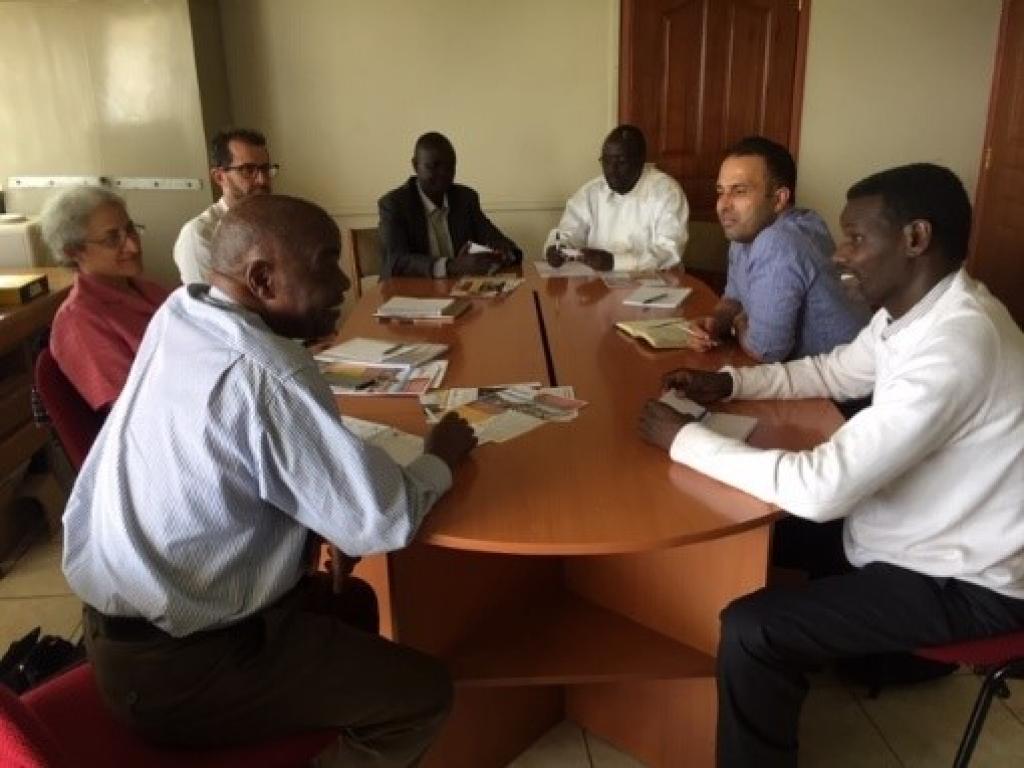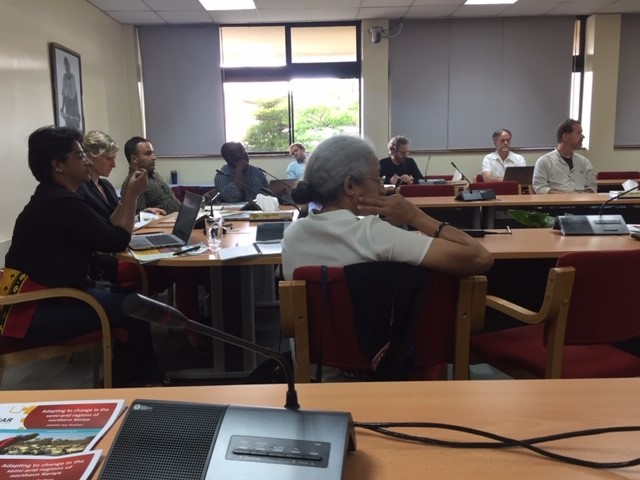Strategic partnerships for research impact in Ethiopia and Kenya

By Alemayehu Zewdie, Research-into-Use coordinator, Oxfam GB
Stakeholder identification was one of the first tasks that the ASSAR East Africa team undertook at the beginning of ASSAR, to identify potential partners to work with. While the stakeholder mapping exercises in Ethiopia and Kenya helped to identify key stakeholders for the research’s different thematic areas, the task of stakeholder engagement, including the identification of new ones, continued throughout the project, starting from the regional diagnostic study phase in 2014/15 to dissemination of the research findings at different governance levels later in the project.
In late 2018, with the research completed, findings were disseminated to key stakeholders in both Ethiopia and Kenya, mainly through one-on-one meetings to enable in-depth discussions and the clarification of questions and doubts. In Kenya, the ASSAR team had the opportunity to provide specific evidence for government stakeholders, such as the Ministry of Environment and Livestock, that were preparing to attend the United Nations Framework Convention for Climate Change (UNFCCC) COP24. Similarly, a meeting with the UK Department for International Development (DFID) was successful as the team heard about DFID’s interest to use the ASSAR findings to develop programmes/projects in Kenya or elsewhere with a similar setup.

At the same there were opportunities for the ASSAR research team to also present their findings to a larger audience. In Kenya, a half-day workshop was held with researchers from the International Livestock Research Institute (ILRI). The workshop led to an engaging discussion about both ILRI and ASSAR work in Kenya, and opened the door for potential future collaborations with the University of Nairobi and University of East Anglia. Moreover, ASSAR and ILRI’s work - which highlight how working at a county level helps to understand what the local community is feeling about climate change and related issues and impacts - will be integrated into Kenya’s spatial plans.
In Ethiopia, the ASSAR team shared the research findings with the Ministry of Agriculture (Natural Resource Management directorate), Ministry of Environment, Forests and Climate Change, and Ministry of Water, Irrigation and Electricity. In all meetings, the research on Prosopis juliflora garnered the most interest as it is one of the key problems faced in the semi-arid regions of the country and the government is seeking solutions to manage, control and utilise this invasive species. The three ministries also showed an interest in documenting the research findings and sharing these with different technical colleges and universities to be used as educational materials. The discussion with the Ministry of Water, Irrigation and Electricity also indicated that ASSAR findings (specifically those on governance and water management) may be used as an input in the current review of the water and energy sector of the country, and specifically for the water sector strategy.
Way forward

In both Ethiopia and Kenya, the dissemination of ASSAR research findings helped to create a network for future collaboration and created a platform to understand the research, policy and practice interface which ASSAR is keen to show to others. The ASSAR model of incorporating Research-into-Use in the research processes created an avenue to think about influencing and impact. Not only can the ASSAR findings inform policy and practice at multiple levels, such as through inputting in the design of new programmes or projects in Ethiopia and Kenya, but even the process of doing research alongside continuous engagement and strategic partnerships, may influence future adaptation research itself.